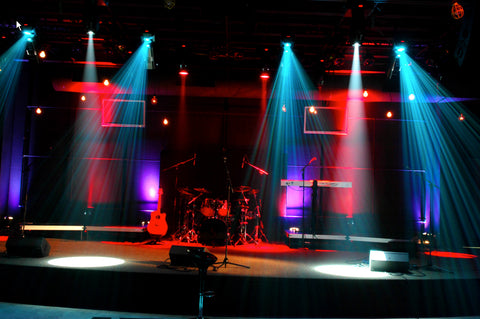-
Audio
-
Guitar
-
Bass
-
Blog
-
SALE
- Financing
- Support
- SINCE 1946
July 28, 2016

While there’s no doubt that intentionally adding some echo or reverb to your band’s vocals can be a nice effect, the overbearing natural reverb and echo that results from the acoustical properties of certain concert halls, churches, and other venues can be a huge problem for your band’s overall sound and result in an unintelligible mess! If your band is all mic’ed up through the PA, playing and hearing mostly echo instead of instruments can make it really difficult to perform well, let alone stay in time and in tune with one another.
This article will give you an idea of what to do if you are faced with this situation and help you to prevent a reverb-filled venue from being your band’s worst enemy.
The only way to completely remedy an echo chamber is to modify it physically or acoustically, but 99% of the time that is not a feasible solution (unless your guitar player is an acoustic engineering guru who can move at the speed of the Flash and fix the room before you play). Next time reverb is an extra instrument in your band’s sound, try out these tips!
November 11, 2025
"This Is An Underrated Sound System!" DJ Tech Tips reviews the Carvin Audio TRC400A 4000W Powered Column Array System in this video.
October 13, 2025
Carvin TRC Active Column Array System features and setup video. Watch this video to discover the features and benefits of our active column array sound system. TRC Powered Column Array Systems offer portability with high SPL levels that project up to 400’ with exceptional clarity. Unsurpassed high frequency and deep bass response will place the audience in the center of your performance. TRC Systems are scalable and are available in 2000W, 4000W, and 8000W models.
June 18, 2025
Carvin Audio teams up with Red Bull to provide audio for the VIP experience in Des Moines for the 2025 Soap Box Race Iowa. The TRC Active Column Array System was used for the event.
Sign up to get the latest on sales, new releases and more…
NoFraud Frequently Asked Questions
"Make a joyful noise unto the Lord all of the earth; make a loud noise and rejoice and sing praises. Sing to the Lord with the harp and the voice of the psalm." - Psalm 98:4-5
© 2025 Carvin Audio.
Carvin Corp.
POS and Ecommerce by Shopify
